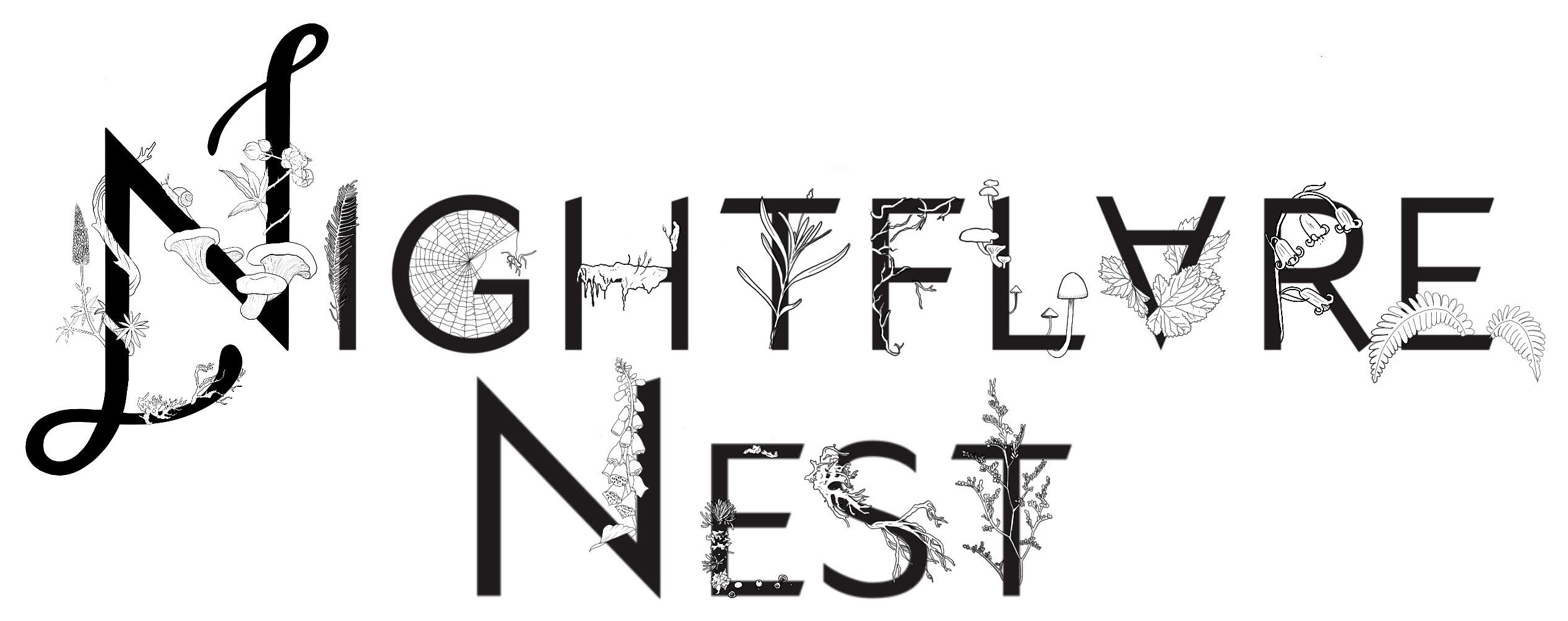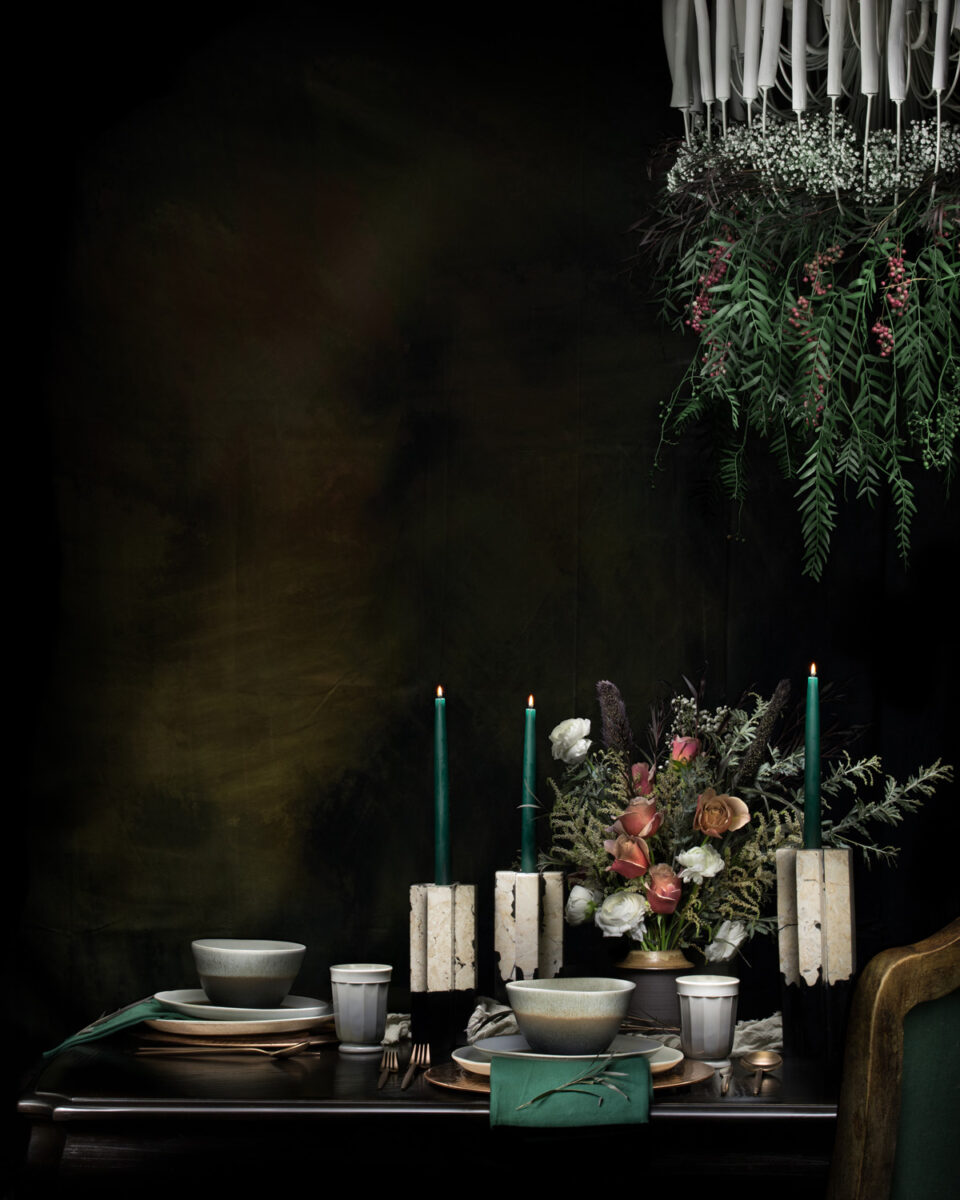It is time to slowly step out of hibernation. Though these days have been short and cold, we will begin to see them grow longer once more. Winter is a time for rest and refuge, until the warmth from the sun shines down and thaws the soil. Now, light your candles and pay homage to that very bright light that awakens the blooms and feeds the crops so that they may sustain us. Revel in the return of the sun!
We celebrate on the shortest day and longest night of the year, the Winter Solstice. It is a time to look forward to the returning daylight. A time to ignite hearth fires and light candles to symbolize an internal life-flame within the home that chases away evils lurking amidst the darkness and lures back the returning sun. There were many traditions used in ancient Paganism to celebrate this wondrous occasion and bring some good intentions into the New Year.
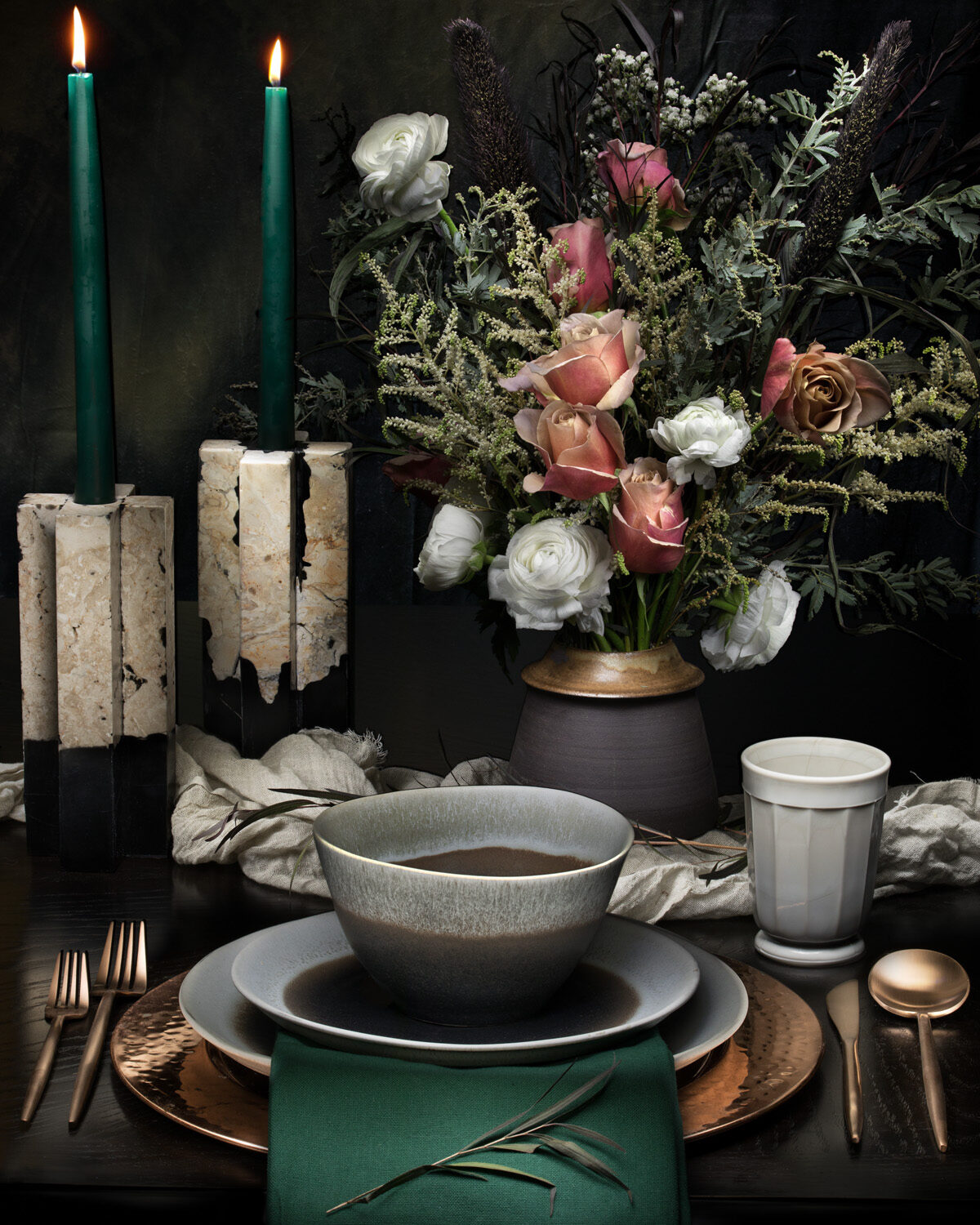
Yule is probably the most well known and widely adapted Pagan holiday in the modern Western world, yet its traditions have gone through so many permutations through the centuries that most of us have little clue as to what the rituals and rites mean. To some degree this is by design, as Christians had a flair for appropriation. A Germanic and Nordic Pagan holiday, Yule underwent a reformulation as Christianity emerged as the dominant religion in the region. Christmas was first celebrated in Rome circa 336 CE as a means of subverting and replacing the Roman’s Pagan solstice festival Saturnalia, where gifts were given, candles were lit, and merriment was made by all. Social classes were essentially dissolved, quarrels were put aside and wars were postponed. In an attempt to convert the celebration, Jesus was even attached to solar worship and likened to the sun. By the time the religion infiltrated Northern Europe a few centuries later, Yuletide traditions began to amalgamate with Christmas, giving birth to the Christmastide that the Western world celebrates aspects of today.
Nightflare Nest Yule Feast Menu
Cocktail
Mulled Ale + Calvados + Date Syrup + Apple Purée
First Course
Marinated Golden Beet Medallions w/ Mint & Toasted Cacao Nibs
Main Course
Pine Smoked Crab w/ Dulse Hollandaise
Patatas Bravas w/ Ricotta + Chile Oil + Chives
Dessert
Chocolate Stout Bundt Cake w/ Spruce Tip Crème Anglaise
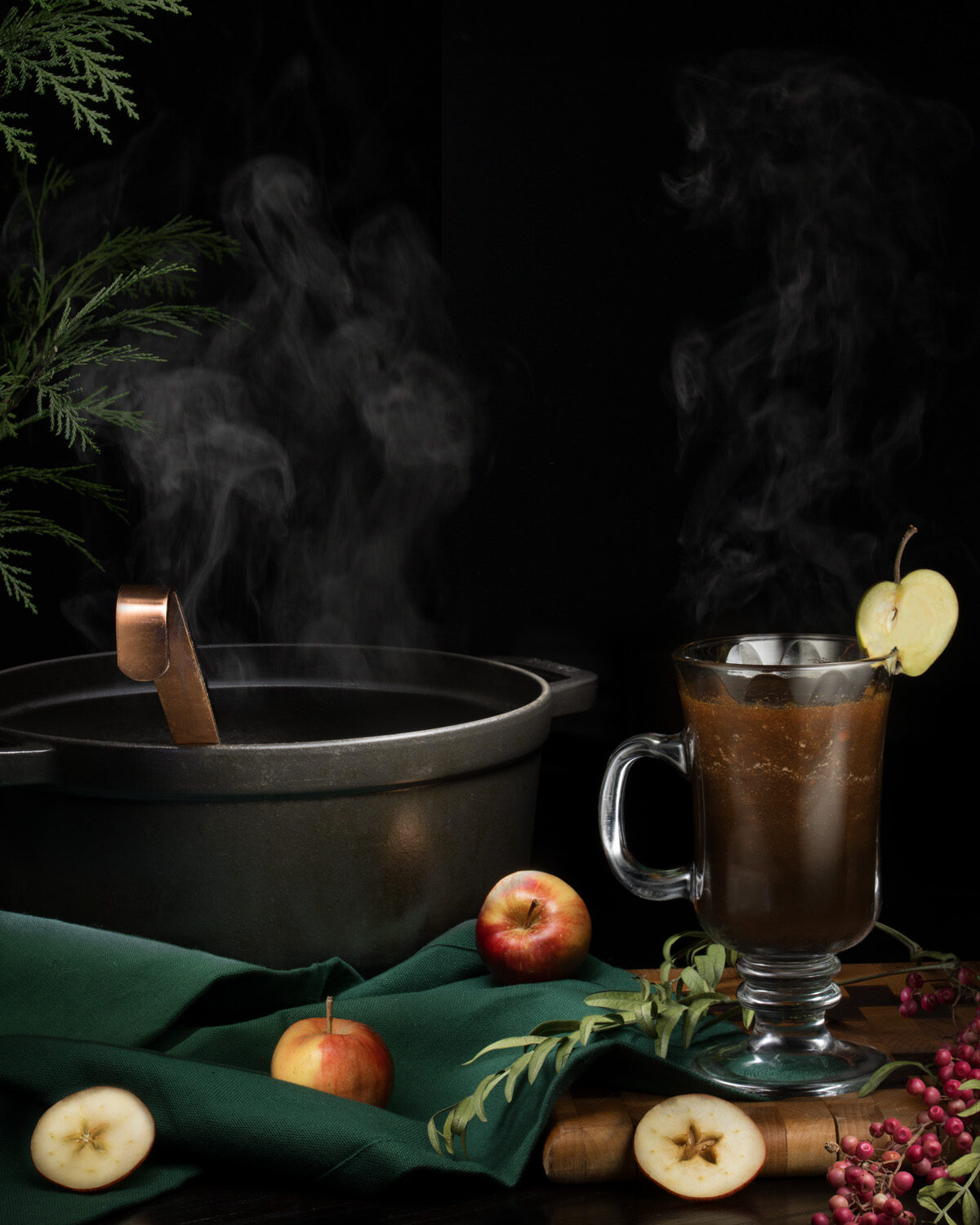
Pagan yule traditions you may recognize…
Wassailing/Caroling – As early as the 15th century in cider producing regions of England, celebrants would sing to the apple trees in hope for a good abundance of apple crops the following year. They would bring with them noisemaking instruments and bowls of toast soaked in mulled beer and cider known as wassail. As they passed through the orchards they would serenade the trees while adorning their bare branches with the soaked toast, pouring and splashing the wassail amongst the roots and limbs. Only later would the practice extend itself into “luck visits” where celebrants would travel village to village, singing door to door to entertain the townsfolk. They would offer their music and hearty drinks from their wassail bowl and in return would be gifted with lovely sweets, small gifts and tokens. This tradition fused with a peasant practice on the Twelfth Night of Christmas similar to trick-or-treating, where the underclass of the town would enter the homes of lords, requesting food or drink in exchange for blessings and well wishes. Thus, caroling was born.
Evergreens like holly, ivy and conifers were used as domestic decorations by many Pagan cultures in the forms of wreaths and garlands. They symbolized eternal life as they seemed to be the only thing left alive after the frost took everything else. Thus the plants were thought to be imbued with magical and sacred properties that would chase away the demons of darkness and death. Wreaths especially symbolized the wheel of the year and the circle of life, as they had no beginning or end.
The Yule Log began in antiquity as a Norse Pagan tradition wherein a special tree was selected, chopped down, trimmed and hauled into the bonfire where it would burn bit by bit over several festive nights. It was another tradition heralding the return of the sun. Later this tradition made its way into the medieval Northern European home where large stone hearths were constructed and large Yule logs made from felled Oak trees were heaved into the perpetual fire. It was also believed that the longer the Yule log burned, the sooner the sun would come to warm the earth. The last piece of the log was always saved to start the fire the following year.
Mistletoe was considered a symbol of fertility, peace and love in many Pagan cultures. Romans hung mistletoe during Saturnalia, and it was collected by Celtic druid priests, as recorded by Roman naturalist Pliny The Elder. The parasitic evergreen was slashed from oak trees on which it grew with a golden sickle. It was then mixed with the blood of a sacrificial white ox to combat animal infertility and as an antidote to all poisons (ironically, mistletoe itself is highly poisonous). Kissing under the mistletoe integrated into Christmas traditions in the 18th century, where men of the servant class would steal a kiss from any woman seen standing under the hanging plant.
New Year Resolutions – The Norse Pagans would sacrifice a wild boar, known as the Sonargöltr, on Yule to the god Freyr in a ritual called Heitstrenging. After the boar had been slain, it would be taken before the king where people would lay their hands upon its bristles and make solemn (albeit drunken) vows for their future. Then the boar would be roasted and consumed by the celebrants.
Some Natural Gifts of Yule: Holly, Oak, Ivy, Evergreens, Laurel, Bayberry, Mistletoe, Thistle, Frankincense, Pine, Citrus, Ginger, Spices, Nuts, Sage, Yellow Cedar.
Sun imagery decorations made their way onto alters, ornaments and even food. Yellows, reds and coppers and golds were important colors to incorporate into Yuletide decorations.
Stones of Yule: Rubies, Bloodstones, Garnets, Emeralds, Diamonds
Flavors of Yule
As with all cyclical pagan festivals, ingredients for feasts were mostly determined by what was seasonal, appropriate, and available. A celebration in the dead of winter meant that most edibles were either preserved in some way during the warmer months, or dug up from the ground where they had grown unhindered by the frigid temperatures.
Festive meat like ham, goose, and venison was often served during Yule as livestock came to maturity and was slaughtered when there was no longer any grass or grain growing to sustain them. The tradition of the Christmas ham can be traced back to the aforementioned Norse ritual of Heitstrenging, where a wild boar would be sacrificed and roasted. As a symbol of the god Freyr to which the boar had been sacrificed, consuming of it’s flesh was akin to absorbing its godly powers.
Preserved and dried fruit was a sweet treat consumed during the holiday and integrated into many traditional dishes. Figs, dates, apricots, pears and apples were all common.
Root vegetables like beets, turnips, potatoes, kohlrabi, carrots and parsnips would survive the frost even when their foliage had died back and could be harvested from the ground as needed. Golden beets are especially appropriate as symbols of the returning sun.
Winter squash that was harvested in the fall would keep throughout the winter with their thick skins and long shelf life.
Alcohol was consumed in a festive manner as most wines, meads, and beers brewed during the warmer months had fermented to maturity. Wassailing was an honored ritual where beer and cider were essential components.
Warming Spices such as ginger, cloves, nutmeg and cinnamon often made their way into yule feasts and were representative of fire and the heat of the returning sun.
Conifers, including spruce, pine, and fir are immortal symbols of the Winter season as they are the just about the only edible plants that remain green when all others have died back. Did you know that most conifers (with the exception of Yew) are edible? We commonly eat pine nuts, but many parts of the pine tree are edible, from needles brewed in tea to to young pinecones preserved in syrup.
Reading about these rituals makes you think about your own holiday traditions. It may include cooking annual family recipes or coming up with your own, putting up decorations or listening to a certain album reminiscent of the season. Whatever they might be, they are incredibly special because they are a part of you. We know the holidays are looking different this year for many folks, but solitude can sometimes help you discover your own new rituals, in addition to the older ones you choose to preserve. We can surely say in our home that we have kept some old family traditions but the ones we love most are the ones we created together. It’s a time for cooking fresh seafood, roasting Patatas Bravas and baking Orange Blossom Vanilla Bean Madelines. Drew Makes smudge sticks out of cypress, dried sage and rose petals. We burn cedar incense and dry persimmons. If this time of year is suppose to bring you joy, then take the reins, you deserve it.
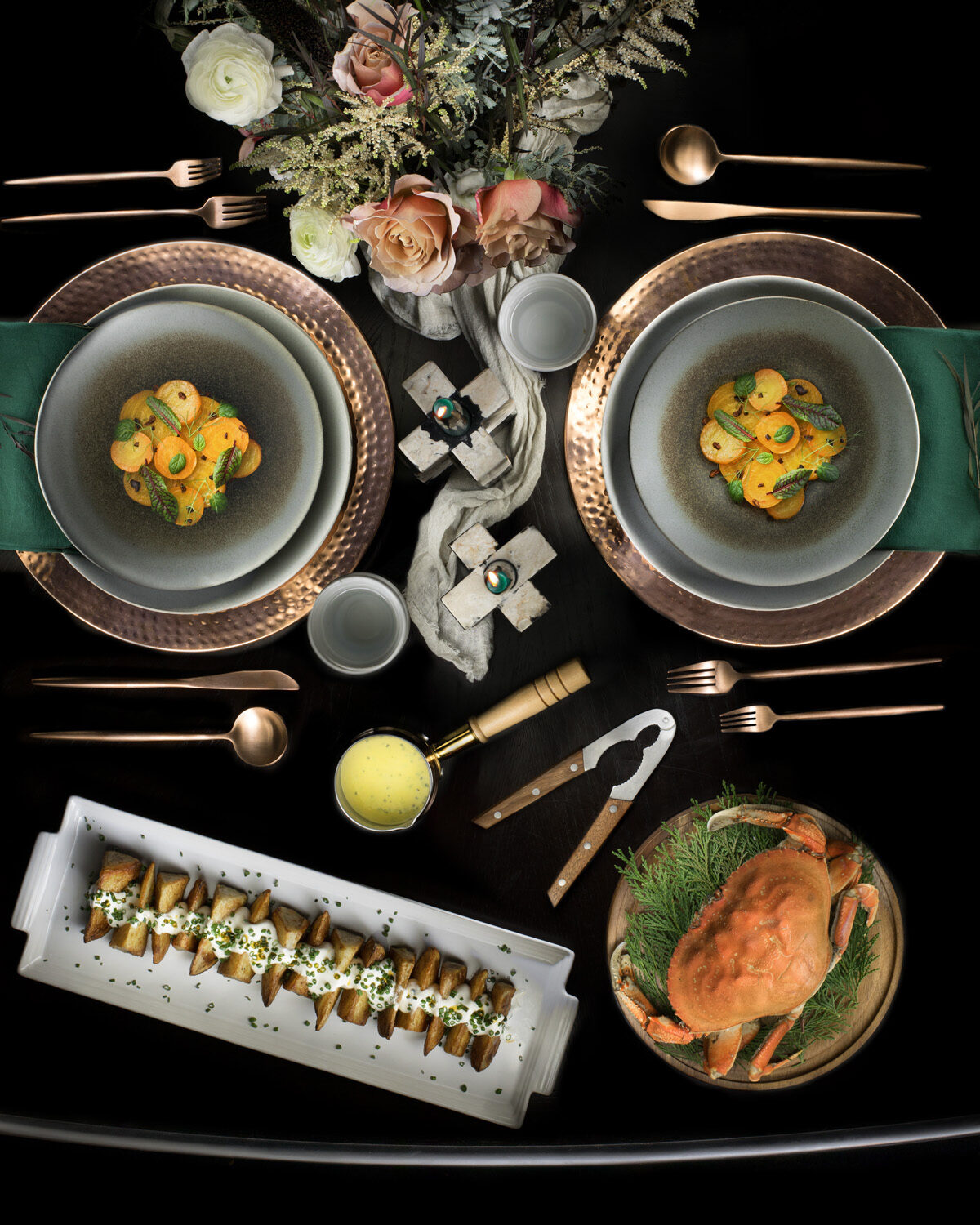
A fun old Yule Ritual
SUPPLIES: Yule log (oak or pine) with white, red and black candles on it (set it in the fireplace), chalice of wine, small piece of paper and pencil for each person.
The altar is adorned with evergreens such as pine, rosemary, bay, juniper and cedar, and the same can be laid to mark the Circle.
After casting the circle the Priestess should say:
“Since the beginning of time, we have gathered in this season to
celebrate the rebirth of the Sun.
On the Winter Solstice, the darkest of nights,
The Goddess becomes the Great Mother and once again
gives birth to the Sun and the new yearly cycle,
Bringing new light and hope to all on Earth.
On the longest night of winter,
and the dark night of our souls,
there springs the new spark of hope,
the Sacred Fire,
the Light of the World.
We gather tonight to await the new light.
On this night, the Maiden, who is also Mother
and Crone, prepares to welcome the Sun.
Let’s now prepare to welcome the new light within.”~Invocation to the Goddess and God:
(Priest) “I light this fire in your honour Mother Goddess
You have created life from death, warmth from cold
The Sun lives once again, the time of light is waxing.
We invite you, Great Mother, to our circle
Bring us new light, the light of your glorious Son.”(Priestess light the white candle on the Yule log and say):
“I come to you as Maiden
Young and free, fresh as springtime
Yet within me a yearning stirs to create and share
and so I become…(Light the red candle) The Mother
I bring forth the fruit of my creativity
Yet an ancient prophet once told me, as I stood with my son,
A sword shall pierce through thy own heart also
And I knew that I must become…(Light the black candle) The Crone
The ancient wise one, Lady of Darkness
We three – in – one who brought forth that special child
as long ago, also anointed him for burial-
A bright light that grew and was sacrificed to be reborn
as a new light.”(Priest) “Ancient God of the forest, we welcome you
Return from the shadows, O Lord of Light.
The wheel has turned. We call you back to warm us.
Great God of the Sun
I welcome your return
May you shine brightly upon the Earth.”~Consecration of the Yule Log
(Priestess) “Yule is the end of the old solar year and the beginning
of the new one. Traditionally, the end of the year is a time
to look back and reflect. It is a time to look ahead
to the future, to make plans and set goals.”On your piece of paper, write something you hope to accomplish during the coming year. When you are finished, attach the slip of paper to the Yule Log.
Priest picks up the chalice and says:
“We toast the new year (sprinkles wine on the log) and in token
of its promise, we consecrate this sacred wood as a focus for the
energies through which we accomplish our tasks and manifest our
desires during the coming cycle.”~All drink from the chalice.
(Priestess) “You who have died are now reborn. Lend us your light through
the winter months as we await the spring. Let us now light the Yule Log.
Once having burned with the Yule fire, these candles will contain the luck
of the log throughout the coming year.”
(remember to save a small piece of the log for next Yule or save the ashes or the candles.)~Priest and Priestess light the Yule log together.
~Closing:
(Priestess – extinguishing the God taper)
“Thank you Bright Lord
for the light you have brought to us this night
May we carry it within us throughout the coming year.”(Priest – extinguishing the Goddess taper)
“Thank you most gracious Lady
for your freshness of spirit, your nurturing care
your infinite wisdom
Live within us throughout the coming year.
So mote it be.”~Close the circle the way you usually do.
The White Goddess
